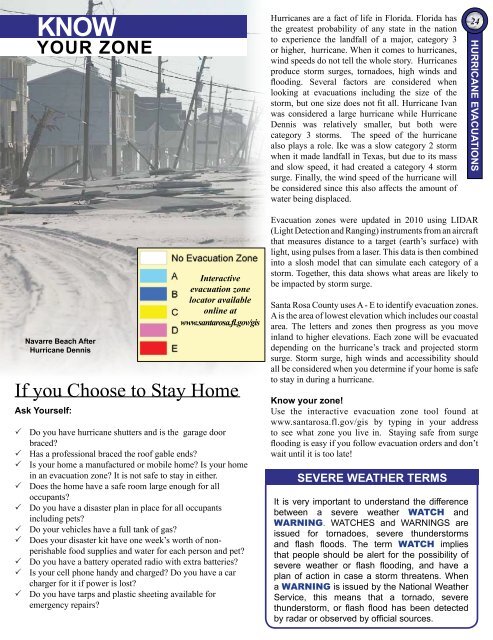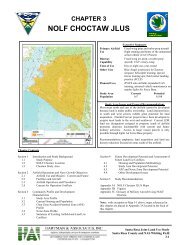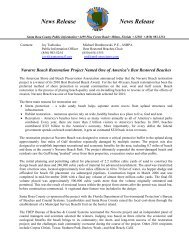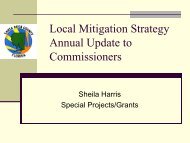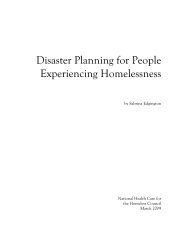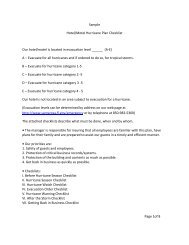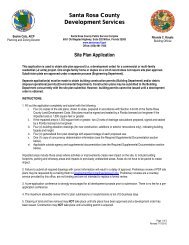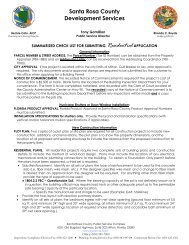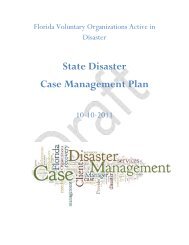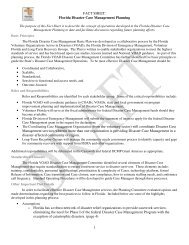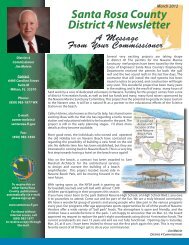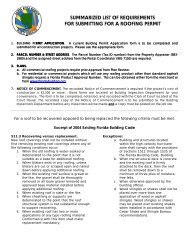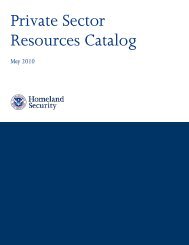Disaster - Santa Rosa County
Disaster - Santa Rosa County
Disaster - Santa Rosa County
Create successful ePaper yourself
Turn your PDF publications into a flip-book with our unique Google optimized e-Paper software.
Know<br />
Your zone<br />
Hurricanes are a fact of life in Florida. Florida has<br />
the greatest probability of any state in the nation<br />
to experience the landfall of a major, category 3<br />
or higher, hurricane. When it comes to hurricanes,<br />
wind speeds do not tell the whole story. Hurricanes<br />
produce storm surges, tornadoes, high winds and<br />
flooding. Several factors are considered when<br />
looking at evacuations including the size of the<br />
storm, but one size does not fit all. Hurricane Ivan<br />
was considered a large hurricane while Hurricane<br />
Dennis was relatively smaller, but both were<br />
category 3 storms. The speed of the hurricane<br />
also plays a role. Ike was a slow category 2 storm<br />
when it made landfall in Texas, but due to its mass<br />
and slow speed, it had created a category 4 storm<br />
surge. Finally, the wind speed of the hurricane will<br />
be considered since this also affects the amount of<br />
water being displaced.<br />
24<br />
Hurricane Evacuations<br />
Navarre Beach After<br />
Hurricane Dennis<br />
Ask Yourself:<br />
Interactive<br />
evacuation zone<br />
locator available<br />
online at<br />
www.santarosa.fl.gov/gis<br />
If you Choose to Stay Home<br />
33<br />
Do you have hurricane shutters and is the garage door<br />
braced<br />
33<br />
Has a professional braced the roof gable ends<br />
33<br />
Is your home a manufactured or mobile home Is your home<br />
in an evacuation zone It is not safe to stay in either.<br />
33<br />
Does the home have a safe room large enough for all<br />
occupants<br />
33<br />
Do you have a disaster plan in place for all occupants<br />
including pets<br />
33<br />
Do your vehicles have a full tank of gas<br />
33<br />
Does your disaster kit have one week’s worth of nonperishable<br />
food supplies and water for each person and pet<br />
33<br />
Do you have a battery operated radio with extra batteries<br />
33<br />
Is your cell phone handy and charged Do you have a car<br />
charger for it if power is lost<br />
33<br />
Do you have tarps and plastic sheeting available for<br />
emergency repairs<br />
Evacuation zones were updated in 2010 using LIDAR<br />
(Light Detection and Ranging) instruments from an aircraft<br />
that measures distance to a target (earth’s surface) with<br />
light, using pulses from a laser. This data is then combined<br />
into a slosh model that can simulate each category of a<br />
storm. Together, this data shows what areas are likely to<br />
be impacted by storm surge.<br />
<strong>Santa</strong> <strong>Rosa</strong> <strong>County</strong> uses A - E to identify evacuation zones.<br />
A is the area of lowest elevation which includes our coastal<br />
area. The letters and zones then progress as you move<br />
inland to higher elevations. Each zone will be evacuated<br />
depending on the hurricane’s track and projected storm<br />
surge. Storm surge, high winds and accessibility should<br />
all be considered when you determine if your home is safe<br />
to stay in during a hurricane.<br />
Know your zone!<br />
Use the interactive evacuation zone tool found at<br />
www.santarosa.fl.gov/gis by typing in your address<br />
to see what zone you live in. Staying safe from surge<br />
flooding is easy if you follow evacuation orders and don’t<br />
wait until it is too late!<br />
Severe Weather Terms<br />
It is very important to understand the difference<br />
between a severe weather WATCH and<br />
WARNING. WATCHES and WARNINGS are<br />
issued for tornadoes, severe thunderstorms<br />
and flash floods. The term WATCH implies<br />
that people should be alert for the possibility of<br />
severe weather or flash flooding, and have a<br />
plan of action in case a storm threatens. When<br />
a WARNING is issued by the National Weather<br />
Service, this means that a tornado, severe<br />
thunderstorm, or flash flood has been detected<br />
by radar or observed by official sources.


